|
August 14th~17th
I needed another crate! No, it's not my OCD
kicking in, but another requirement for 1940s camping. We recently bought a
240v generator for events like Beamish, where we are away for a longer than a
weekend. During the day at events, I wanted to hide it away, but also be able
to keep fuel and accessories with it in a self-contained package.
The original plan was to make a dummy Jeep
engine crate, until I realised just how big that would be. It was also going to
be made from recycled shipping pallets, as we had four spare. These proved very
hard to dismantle on a hot day; much harder than the one used for my 50 cal
crate a few months ago. They would have also added a lot more weight to the
box.
|
|
In the end, I bought some plywood and strip
wood from B&Q as an easier, but more expensive option. The basic ply box is
28 x 18 x 18 inches, with a 3/4 inch thick timber base. The base is only a
couple of inches high, with the whole box lifting off the top. This gives easy
access to the generator and accessories.
|
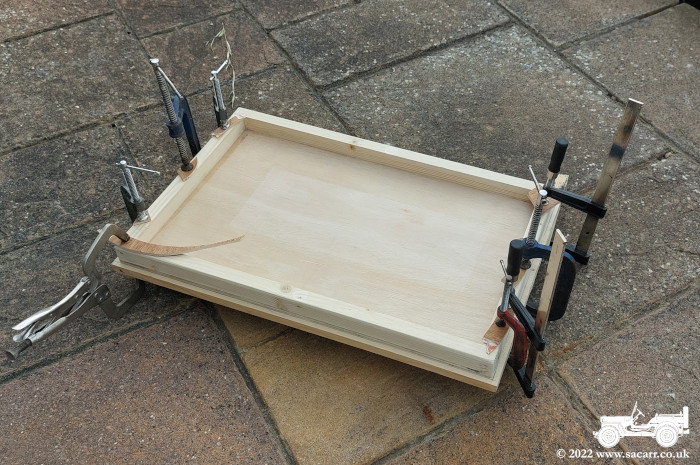
|
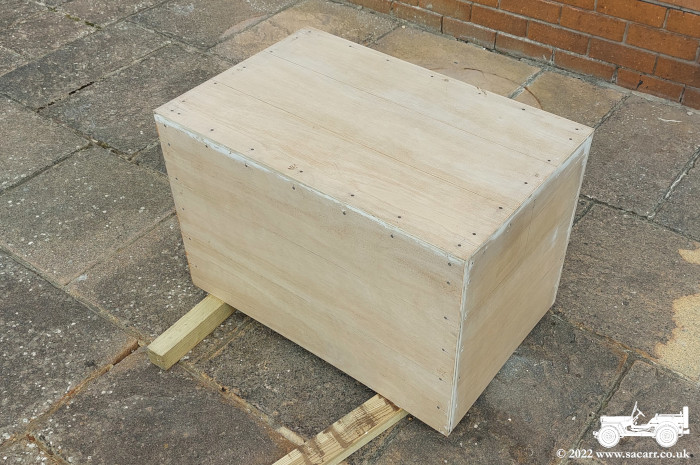
|
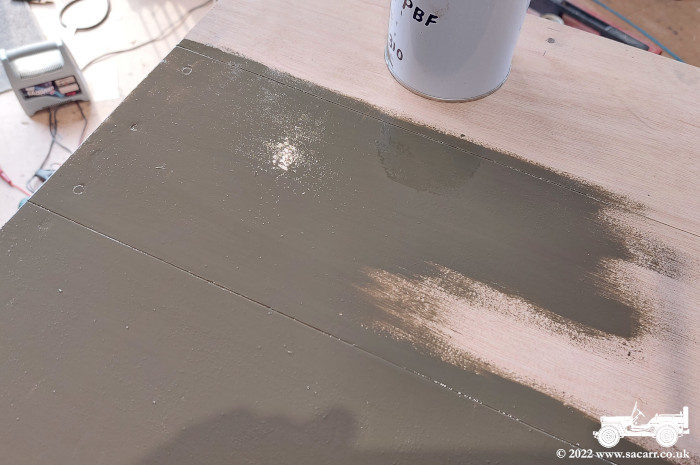
|
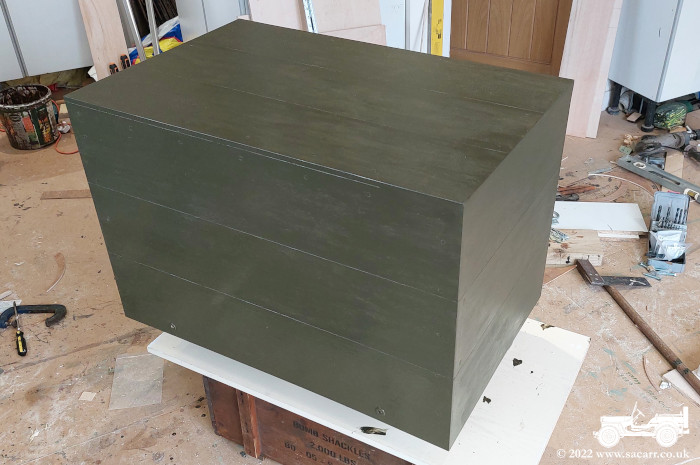
|
The box was both nailed and glued together,
though the nails were really for cosmetic value. I cut grooves into the plywood
panels to simulate 6 inch planks. The box was primed with a couple of coats of
dilute waterproof PVA glue and then given two coats of olive drab; the remains
of the first batch of paint bought for the Dodge.
|
|
While the paint was drying, I turned to my computer to look for an appropriate
looking font. I'd found a couple of pictures of an engine crate and found a
font that was similar. It just needed a little editing of some letters. The
markings I chose were for a replacement cylinder for a Wright Cyclone aero
engine. As I said before, I was going to go for a "Go-Devil" engine
crate, but needed an object more suited to the size of box I now had. The
lettering was printed onto thin card and then covered in Sellotape. This gives
a smooth finish that will wipe clean and the tape helps to reinforce some of
the small stencil bars that hold the letters together. I then spent a day with
a scalpel, cutting it all out. On the 17th, I was ready to start painting,
beginning with the top. I began using a small piece of sponge, which was fine
for the larger letters, but had to switch to an old and tired modelling brush
for the smaller letters.
|
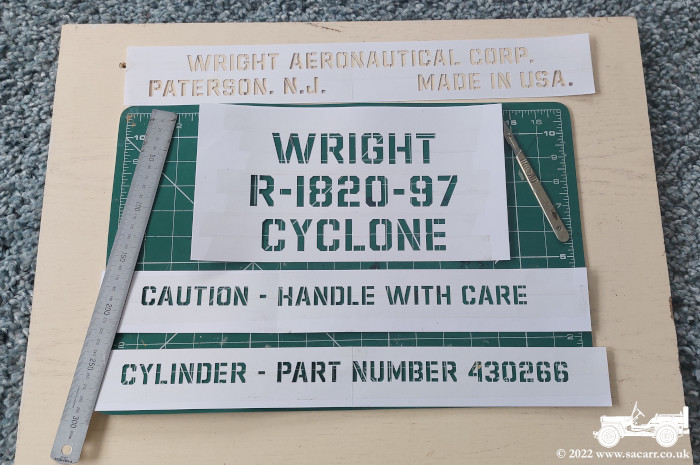
|
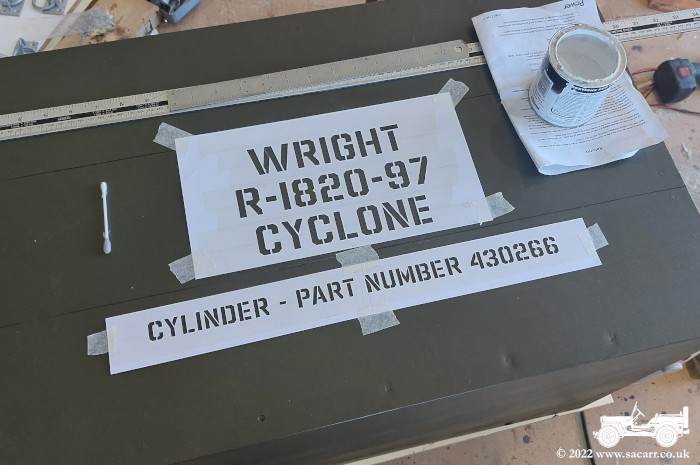
|
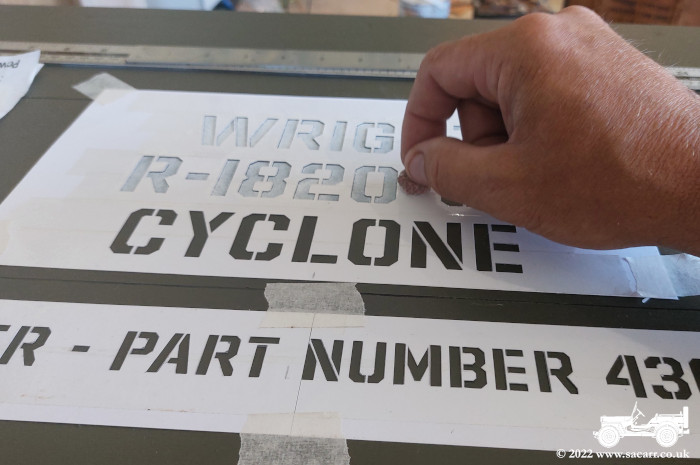
|
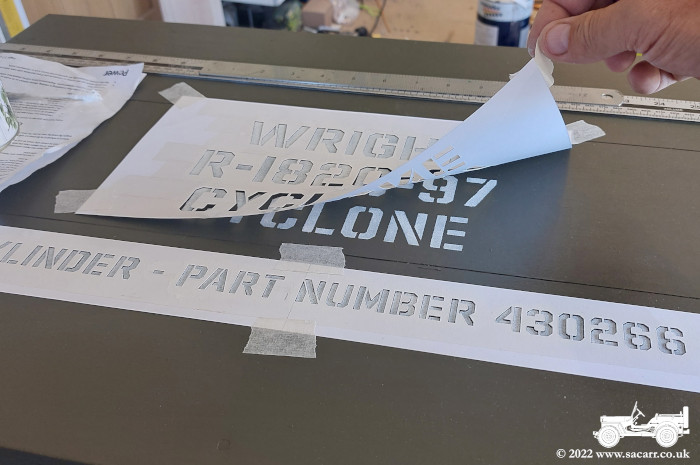
|
|
Both sides were painted next, resting the crate on two strips of wood at either
end when I came to do the second side, so as not to smudge the still tacky
paint on side one. The ends were next, with the Curtiss Wright logo added too.
By mid afternoon, the painting was done, the lifting rings fitted and it was
left in the sun to bake the paint. The last picture shows the base loaded up.
Four bolts hold the lid onto the base via 'T' nuts in the base.
|
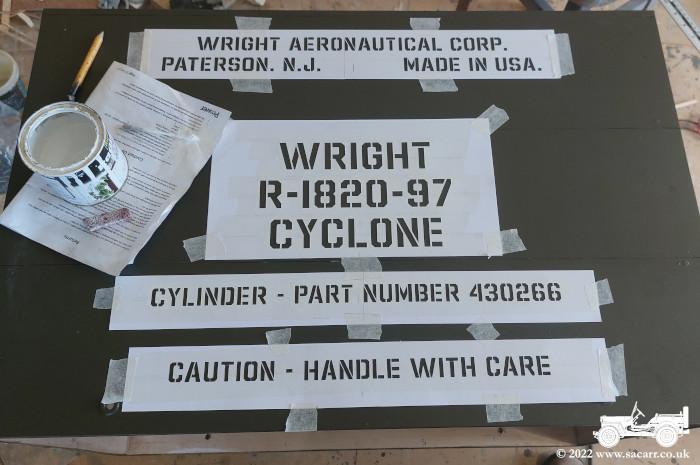
|
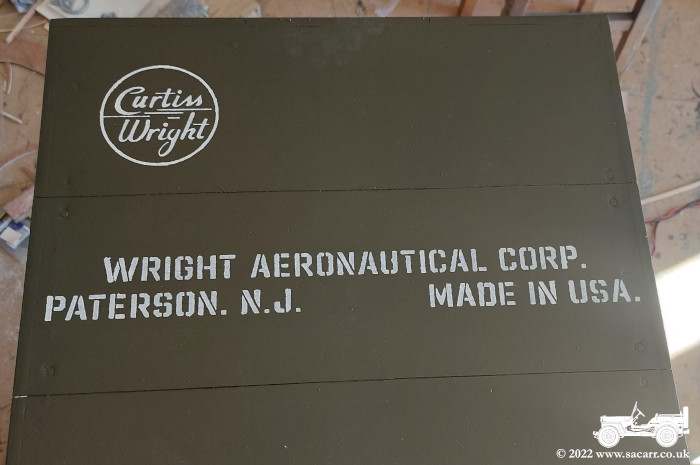
|
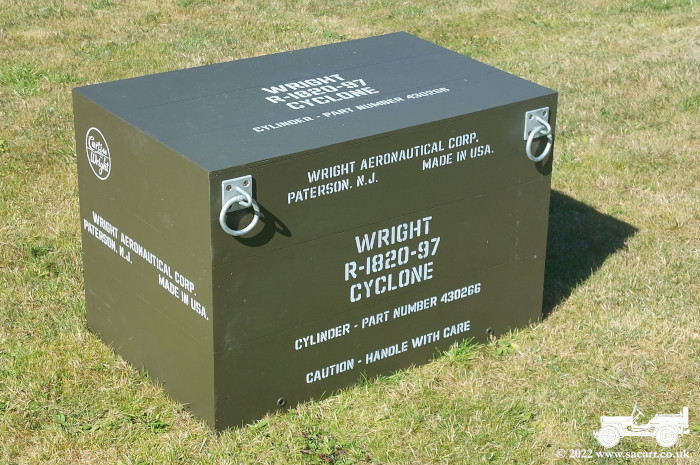
|
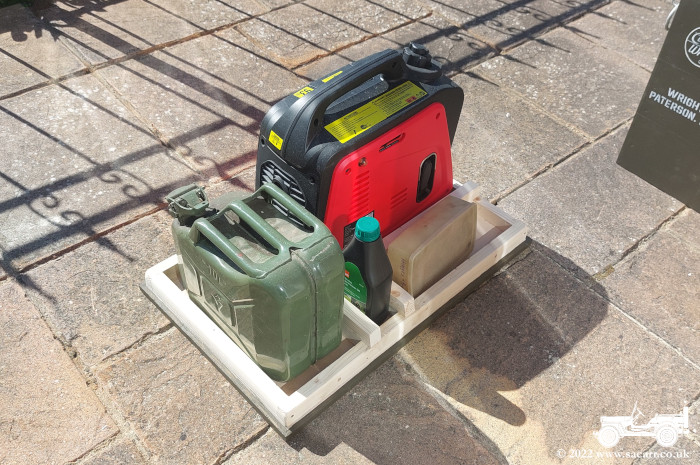
|